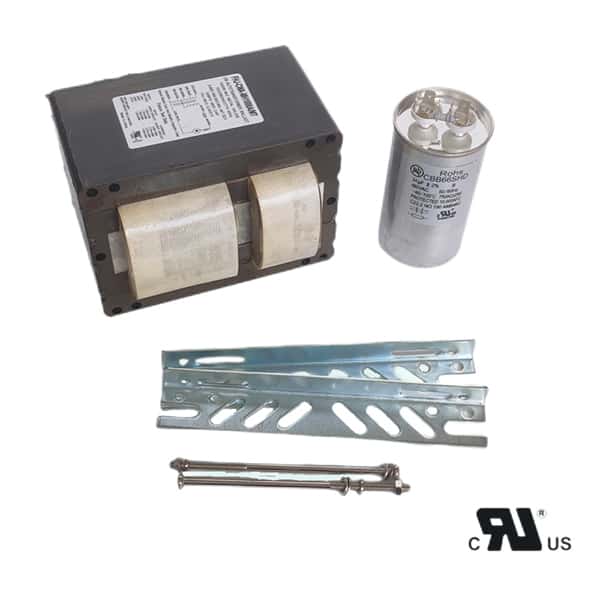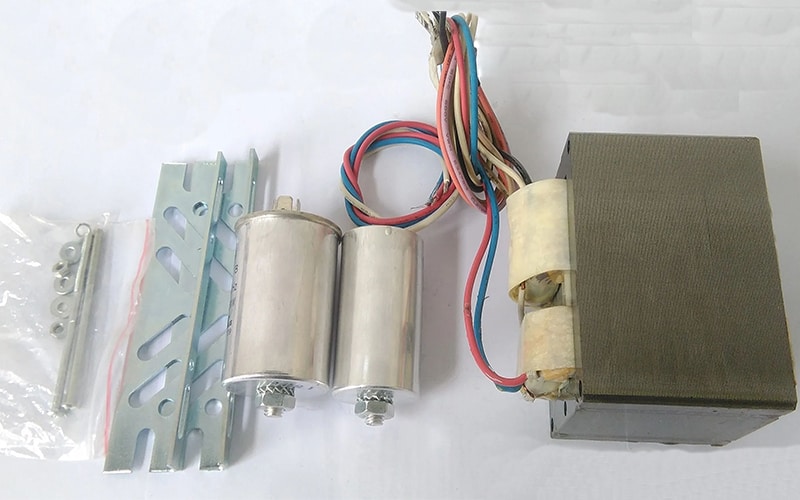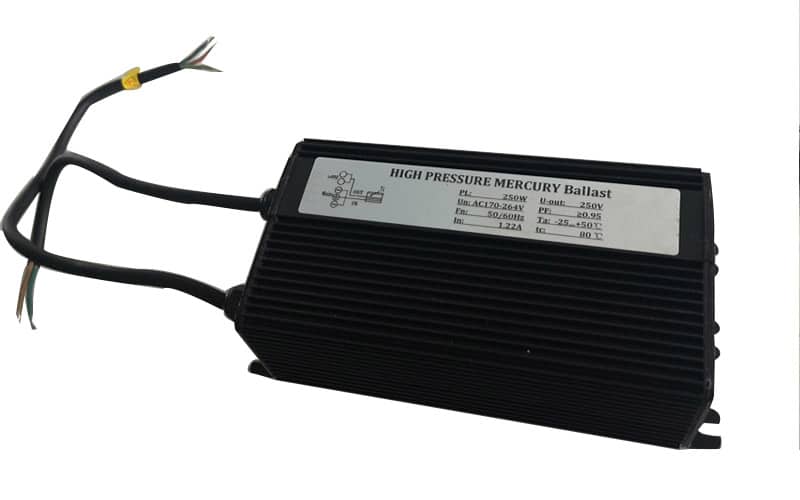Choosing the correct light ballast can be confusing, especially when you start thinking about the materials and the size of the components. The key here is that the metal for ballast comes in different sizes depending on the type and purpose.
The metal that goes in a ballast depends on the type of ballast. It may be copper or aluminum windings in different sizes to handle different electrical loads.
We’ll talk about things like what material to use, what size wire to use, what kind of metal to use and all that kind of stuff.
What is the Size of Ballast Material?
The core material inside a ballast is typically made from laminated steel, designed to be highly conductive while providing sufficient magnetic efficiency. The size of this core varies based on the type of ballast, with magnetic ballasts for high-intensity lights like HID lamps having larger cores. In smaller systems, such as fluorescent ballasts, the core may be smaller, but it is still essential for regulating current.
For industrial-grade ballasts, the metal cores can weigh several kilograms, providing both the necessary electrical management and heat dissipation. These cores are crucial for ensuring that the ballast performs effectively under high loads.
What Size Wire is Used on a Ballast?
The wire size used in ballasts depends on the wattage and type of fixture. In most lighting systems, the wire gauge ranges between 12 and 18 AWG, with larger ballasts requiring thicker wire to safely handle higher current loads. For instance, a 400W metal halide ballast may use 12 AWG wire, while a lower-wattage fluorescent system might only need 18 AWG.
Wire size is essential to ensure safe current flow and prevent overheating, which could lead to premature ballast failure. Always check the specifications of the ballast to determine the appropriate wire size.
What Kind of Metal is in a Lamp Ballast?
The metal used in a lamp ballast typically consists of either copper or aluminum. Copper is generally preferred for its superior conductivity and lower resistance, leading to better performance and heat management. However, aluminum is often used in more cost-sensitive applications due to its lighter weight and lower cost.
These metals are used in the windings of magnetic ballasts, where they play a critical role in energy conversion and heat dissipation. The choice of metal can impact the longevity and performance of the ballast, with copper offering longer-lasting durability in high-intensity applications.
What is the Normal Size of Ballast Used for Points and Crossing?
Ballasts used for specialized applications, such as in railway points and crossings, are significantly larger than those in regular lighting fixtures. These industrial ballasts are designed to handle large electrical loads and often feature thicker metal cores and windings to ensure reliability under extreme conditions.
The metal components inside these ballasts are generally more robust, with laminated steel cores and copper windings that are thicker than those found in residential lighting systems.
What Size Stone is in Ballast?
In large-scale applications such as metal halide or high-pressure sodium systems, the core of the ballast can be quite sizable, resembling the heft of a small stone. These components are designed to manage high voltage and current, making them essential for heavy-duty lighting solutions.
The size of the ballast’s core material often correlates with the wattage of the lamp, with higher-wattage ballasts requiring larger cores to effectively manage electrical loads.
How Thick is Ballast?
The thickness of the metal components inside a ballast, especially magnetic ballasts, can range from a few millimeters to several centimeters. This thickness is crucial for ensuring that the ballast can handle high currents without overheating or failing. In magnetic ballasts, the windings are typically made of copper or aluminum, with the thickness of these windings depending on the wattage of the lamp.
The core’s thickness also plays a vital role in the ballast’s magnetic efficiency, with thicker cores providing better performance in high-wattage applications.
Does Ballast Size Matter?
Yes, ballast size matters significantly. Larger ballasts often have more robust components, allowing them to handle higher wattages and operate more efficiently under heavy loads. For instance, a ballast designed for a 400W metal halide lamp will be much larger and heavier than one designed for a 35W fluorescent lamp.
Larger ballasts are also better equipped to dissipate heat, reducing the risk of overheating and extending the lifespan of both the ballast and the lamp.
What Size is a Track Ballast?
In track lighting systems, the size of the ballast can vary depending on the length of the track and the number of lights. Industrial-grade track lighting systems often use larger ballasts with more significant metal cores to manage the increased electrical load. These ballasts are typically designed to handle multiple fixtures, ensuring consistent performance across the entire system.
Residential track lighting systems may use smaller, more compact ballasts, which are often electronic rather than magnetic, to reduce size and weight.
How Do I Know What Size Ballast I Need?
To determine the correct ballast size, you must match the ballast’s specifications with the type of lamp you are using. For example, a 400W metal halide lamp requires a ballast rated for 400W. Additionally, you need to consider the voltage and current requirements of the lighting system to ensure that the ballast can handle the electrical load safely.
Refer to the manufacturer’s guidelines to ensure that the ballast is the right size for your specific application.
Final Words:
The size and type of metal you use in the ballast are important to how well it works and how efficient it is. If you pick the right size, it makes all the difference in the world in how long your lights will last and how they will work.





